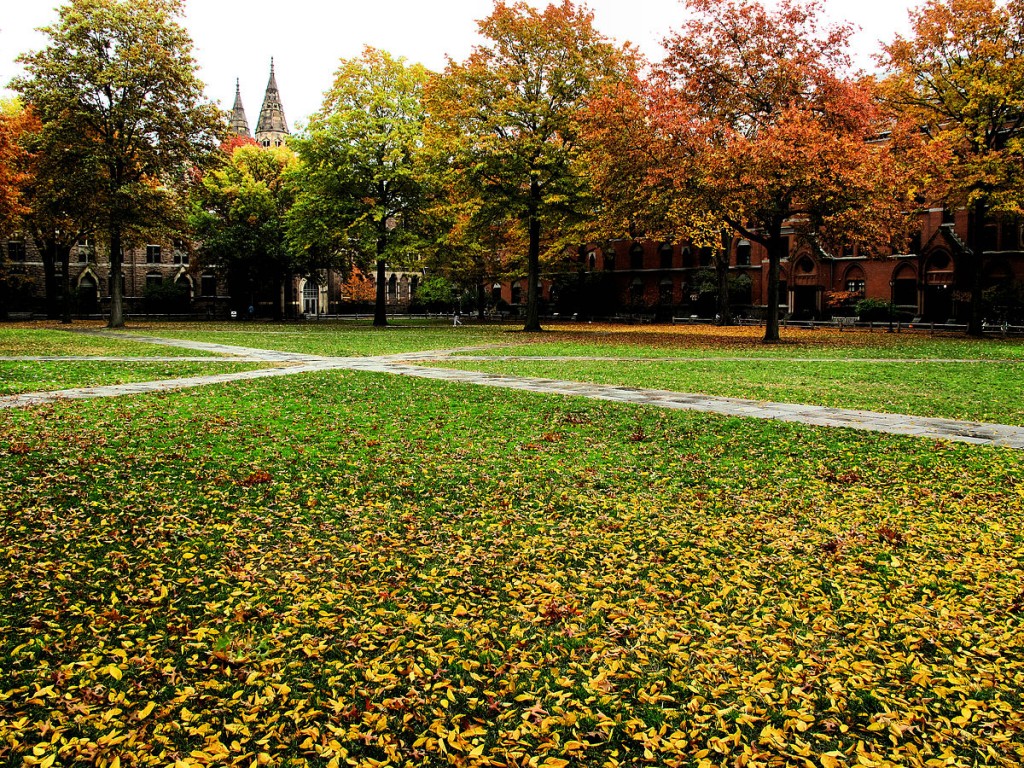Colleges are amongst the last remaining places where ordinary Americans experience an authentic life in common. That’s why we go back and we give back. We wish we could still belong…
Last weekend I returned to my alma mater. I haven’t been away for very long, but nevertheless I felt pangs of nostalgia. I walked the streets that I’d previously traversed at absurd hours of the morning, headed back to my room after one too many glasses of tawny port and a long, lazy evening of argument. I peeked in the library where I’d spent many a happy hour intending to study or write, only to get caught up in some obscure book I ran across that had captured my mind. I befriended the newest members of the groups I used to be in, and reminisced about my own time. They humored me.
There are a million reasons to hate what the modern university has become, most of which have been repeated enough to become old hat. Sometimes it is said that they don’t prepare their graduates for jobs. Other times we hear that they only prepare their graduates for jobs, creating marketable lemmings with no real knowledge or capacity for thought. Colleges are too expensive. They are not diverse enough, or they are so diverse that they’ve lost any sense of purpose. The relativism of the academy fosters a culture of licentiousness, or alternatively the stuffiness of the meritocratic rat-race stifles creativity.
Don’t get me wrong. All of these indictments of American higher education are substantially true. But then why do we love college so much? Why, if these problems are so commonly known, do donors continue to pump tens if not hundreds of millions of dollars at a time into university coffers, funding everything from new football stadiums to luxury dorm lounges? And why does the next generation eagerly line up, ready to pay any price to be part of it all?
In our zeal to anathematize the trends we find so pernicious, we tend to overlook one defining feature of the modern college experience that is the source of all our nostalgia: college often constitutes the single strongest community that we will ever be a part of.
Colleges are amongst the last remaining places where ordinary Americans partake in rich layers of myth and ritual. You don’t dare touch that statue in the central quad until graduation. You use all the accepted lingo for particular buildings and organizations. You are not-so-secretly proud when you’ve passed through the hazing rituals that your club has been performing on freshmen since the dawn of time, also known as the late 1980s.
In a time when those asked to sing the national anthem at a ballgame frequently forget the lyrics halfway through, colleges remain delightfully filled with song. There are concerts and performances everywhere, and some of them are even good. The students know the alma mater and the fight song—they’re different—and can belt them out on command at any number of campus events. Maybe someday years from now you’ll happen to meet a guy who was in your dorm, and you’ll belt out that fight song together as loud as you can and the whole bar will hate you.
In a country caught between the paradoxical alienation of the cramped urban masses and the cookie-cutter individualism of the suburban single-family home (the porch in the back, a fence to keep out the neighbors), we remember fondly the community of our college years. The tight bonds we made were made possible not because we were uniquely free, but because we were in fact heavily constrained by the built environment. Almost everything we needed was a fifteen-minute walk away. We walked to the dining hall, we walked to class. Most importantly we walked to each other.
We had the leisure time to do so, because our classes, truth be told, weren’t that hard. Happily constrained by the boundaries of campus and perhaps unhappily packed into dorms and apartments with fellow students, we found those who shared our passions or challenged our beliefs. Constrained by the campus meal plan, we broke bread together daily. We forged some of the strongest bonds of friendship we’ll ever experience.
And the buildings! In every corner of the country you can find colleges—big, small, public, private—with absolutely stunning architecture, at least by American standards. Mission revival in the west, old brick Georgian in the east, and everywhere collegiate Gothic. No matter what nihilism lurks around a campus, there the buildings remain, softly whispering to passersby rumors of a higher purpose. For the vast majority of students, their four years of college will be their only ones amidst such beautiful and well-crafted spaces.
It’s that four-year time limit that makes it all so tragic. It isn’t necessarily that college was the happiest time of our lives. We could have done without the student debt, the sleeplessness, and the awkward romantic fumbling. But at the end of the day we realized, however faintly, that our college lives weren’t all youthful mistakes and missed opportunities. However twisted by the deep-seated flaws of the university, our experience was a life in common. It was a taste of a communion that we still long for. That’s why we go back and we give back. We wish we could still belong.







1 thought on “Why we love college”